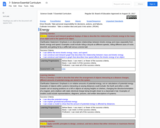
7th Grade Regular Science Scope & Sequence
- Subject:
- Life Science
- Physical Science
- Material Type:
- Full Course
- Provider:
- Liberty Public Schools
- Date Added:
- 08/15/2017

7th Grade Regular Science Scope & Sequence

Most exoplanets are found through indirect methods: measuring the dimming of a star that happens to have a planet pass in front of it, called the transit method, or monitoring the spectrum of a star for the tell-tale signs of a planet pulling on its star and causing its light to subtly Doppler shift. Space telescopes have found thousands of planets by observing “transits,” the slight dimming of light from a star when its tiny planet passes between it and our telescopes. Other detection methods include gravitational lensing, the so-called “wobble method.”---------------------------------------Distant Nature: Astronomy Exercises 2016 by Stephen Tuttle under license "Creative Commons Attribution Non-Commercial Share Alike".

This resource was created by Terresa Greenleaf, in collaboration with Dawn DeTurk, Hannah Blomstedt, and Julie Albrecht, as part of ESU2's Integrating the Arts project. This project is a four year initiative focused on integrating arts into the core curriculum through teacher education, practice, and coaching.
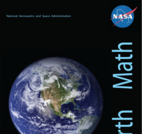
This collection of activities is based on a weekly series of space science problems distributed to thousands of teachers during the 2009-2010 school year. They were intended for students looking for additional challenges in the math and physical science curriculum in grades 9 through 12. The problems were created to be authentic glimpses of modern science and engineering issues, often involving actual research data. The problems were designed to be one-pagers with a Teachers Guide and Answer Key as a second page. This compact form was deemed very popular by participating teachers.
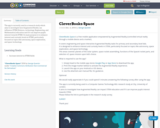
The app is currently used in a research study which aims to investigate how Augmented Reality can influence STEM (Science, technology, Engineering, and Mathematics) education and if it can improve pupils interest towards STEM.
Its main purpose is to enhance interest and curiosity levels in STEM, particularly focused on topics like astronomy, space exploration, and space technology.

Earth Day is a time for raising awareness and appreciation for our environment. Children will learn the importance of their home planet and about the three R's: Reduce, Reuse, Recycle.
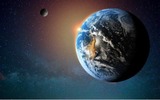
The Fifth Grade Elementary Framework for Science and Integrated Subjects,Earth and Space: Patterns in the Sky, uses the phenomena of perceived sun and moon movements that seem to move around the Earth to explore stars, Earth orbit and rotation and moon orbit around Earth. It is part of Elementary Framework for Science and Integrated Subjects project, a statewide Clime Time collaboration among ESD 123, ESD 105, North Central ESD, and the Office of Superintendent of Public Instruction. Development of the resources is in response to a need for research- based science lessons for elementary teachers that are integrated with English language arts, mathematics and other subjects such as social studies. The template for Elementary Science and Integrated Subjects can serve as an organized, coherent and research-based roadmap for teachers in the development of their own NGSS aligned science lessons. Lessons can also be useful for classrooms that have no adopted curriculum as well as to serve as enhancements for current science curriculum. The EFSIS project brings together grade level teams of teachers to develop lessons or suites of lessons that are 1) pnenomena based, focused on grade level Performance Expectations, and 2) leverage ELA and Mathematics Washington State Learning Standards.
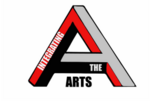
This resource was created by Terresa Greenleaf, in collaboration with Dawn DeTurk, Hannah Blomstedt, and Julie Albrecht, as part of ESU2's Integrating the Arts project. This project is a four year initiative focused on integrating arts into the core curriculum through teacher education, practice, and coaching.

In this segment adapted from ZOOM, cast members use computers to program a robot in preparation for the FIRST LEGO League Challenge tournament. Despite meticulous planning and programming by its designers, an autonomous robot can encounter unexpected challenges. This is true for both LEGOŰ_í__ robots and Martian rovers. In this video segment adapted from ZOOM, cast members enter the FIRST LEGOŰ_í__ League Challenge tournament and work as a team to program their LEGOŰ_í__ robot to navigate a complex obstacle course. Grades 3-8.

Barratt says you don't have to be a genius to be an astronaut, but you do need a sense of determination.
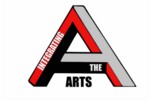
This resource was created by James Parks, in collaboration with Dawn DeTurk, Hannah Blomstedt, and Julie Albrecht, as part of ESU2's Integrating the Arts project. This project is a four year initiative focused on integrating arts into the core curriculum through teacher education, practice, and coaching.
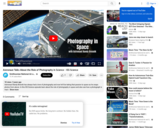
In this ISS Science episode learn about the role of photography in space and also see how a photograph is made.
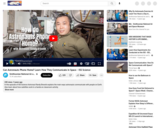
Astronaut Randy Bresnik explains the main ways astronauts communicate with people on Earth. Also learn about how satellites work in a hands-on classroom activity.

Astronaut Scott Tingle talks to us about sounds in space and then "jammed†with host Marty.

Manipulate light by building pinhole cameras, and by investigating the effects that lenses and prisms have on light.

This lesson will investigate the difference between longitudinal waves and transverse waves, and how they are able to transmit energy from one location to another.
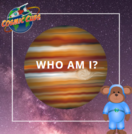
Students guess which planet by given facts of each planet.
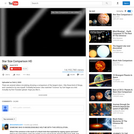
See a line up of moons, planets, and stars to give a visual of how Earth compares in size to other bodies in the universe.
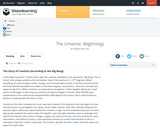
The Story of Creation (according to the Big Bang). A mythical trek through the last 15 billion years.
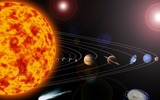
In this lesson, students will hone their investigative skills and form an opinion based on the credible evidence that they uncover. After learning about the decision to deem Pluto a "dwarf planet," students will have time for individual investigation. After using their background knowledge to choose credible sources, they will analyze the information they gather to form their own opinion, which they will support in a video response to a prompt on Flipgrid.